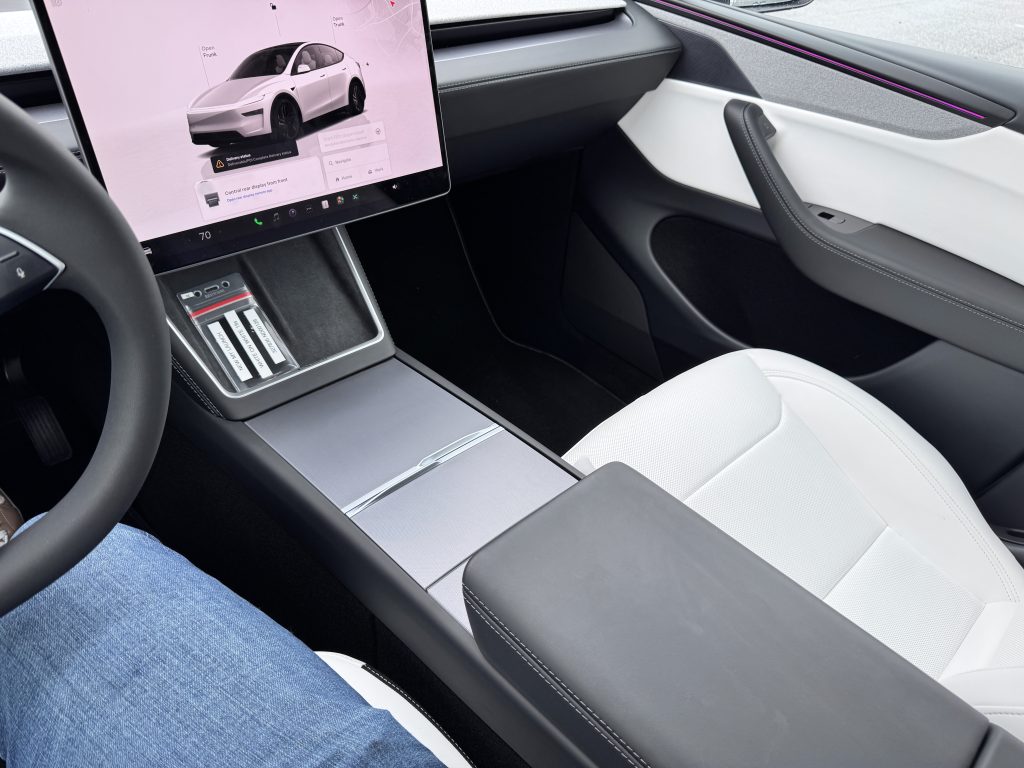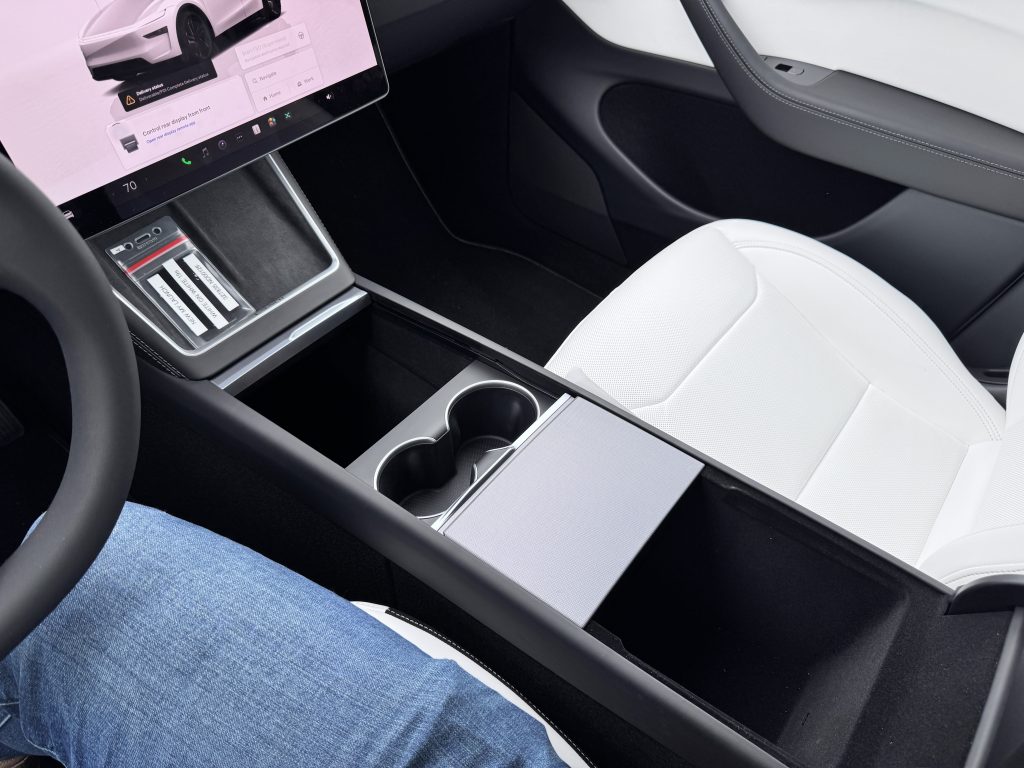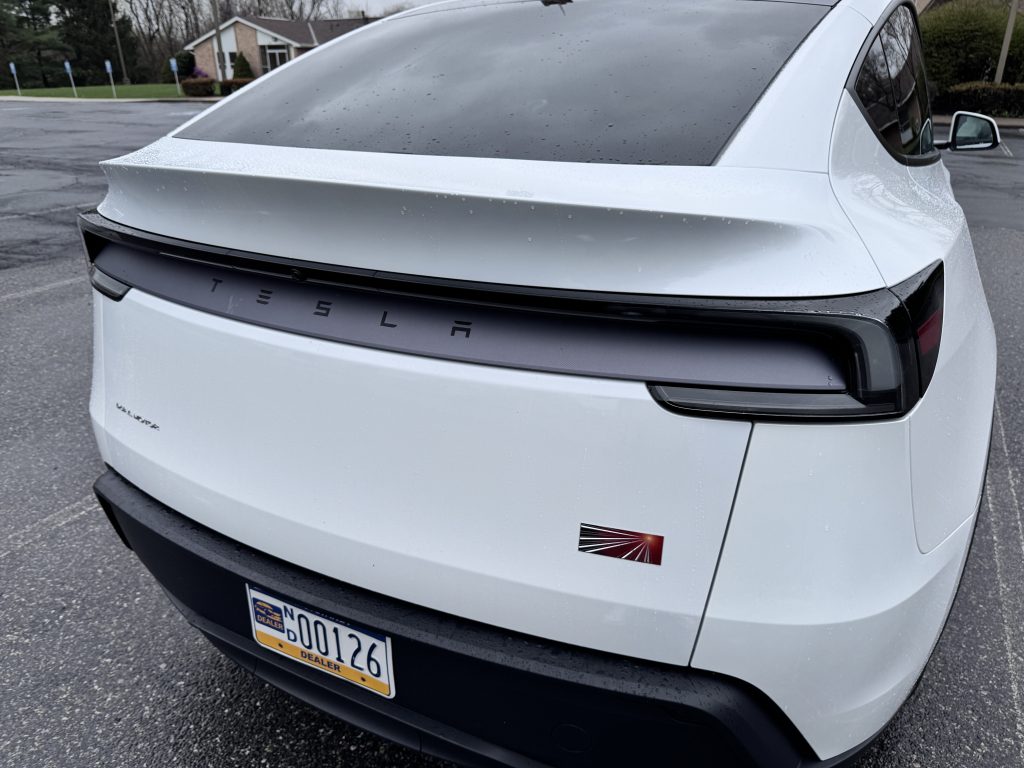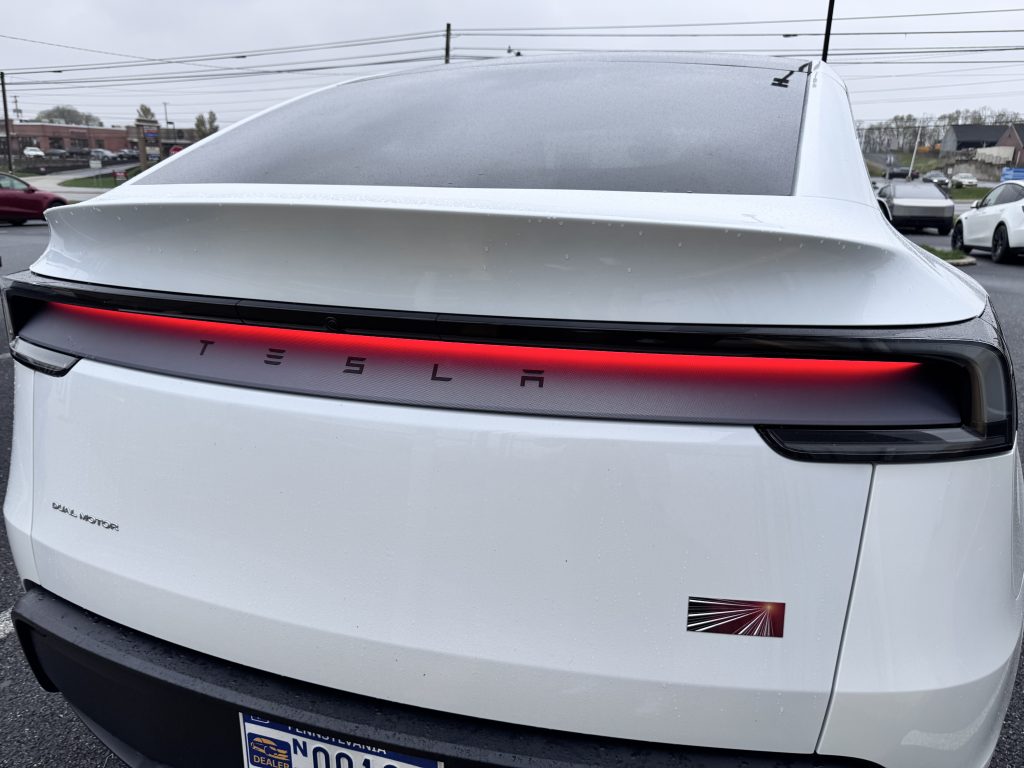News
Musk and Straubel talk about the Model 3 ramp and solar power
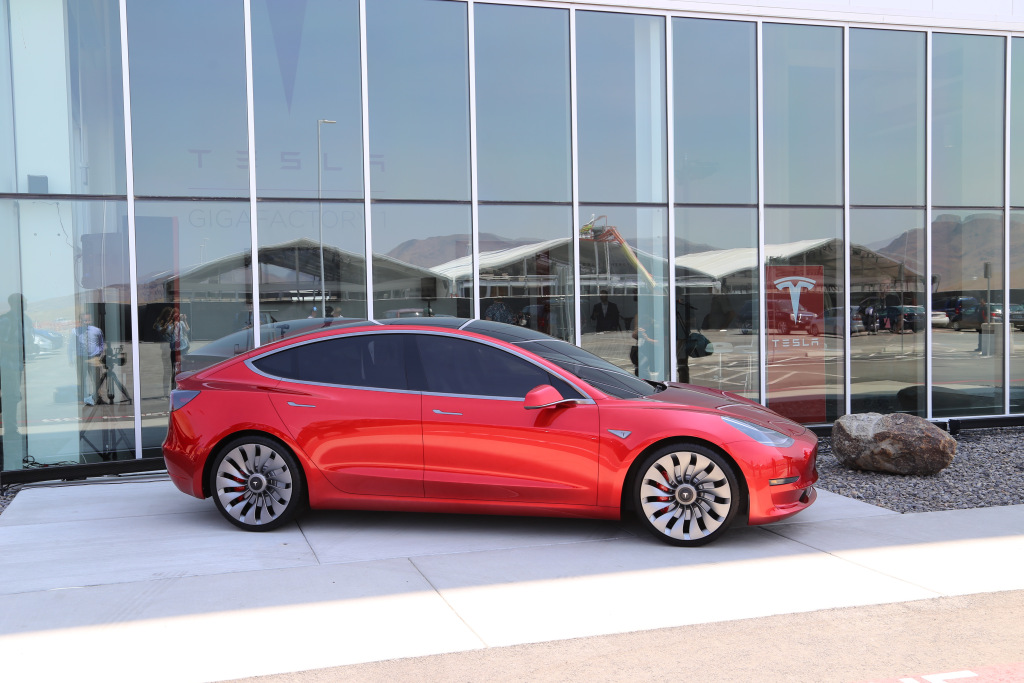
At the press conference held in the lobby of the Gigafactory on Wednesday evening, Elon Musk and JB Straubel told the press a great deal about the upcoming Model 3 and the company’s new focus on solar power.
On The Model 3
Musk: “I believe we are on track to meet the half million by 2018. The hardest thing to predict is really the ramp. The ramp looks like an S curve and grows exponentially. Initially the ramp looks really tiny and as you eliminate bottle necks you climb the ramp and you level off. Its always difficult for us to forecast the exact shape of the S curve for the production ramp.
“It’s much easier for us to forecast when things are going to be steady state. So we’ve been pretty good about forecasting 2018, whereas 2017 is much more in the air because we’ll be working through a complex production ramp.”
Straubel: “One of the points is the schedule and ramp up plan for the Gigafactory. With the pull up of the Model 3, and the volume goal to meet a half million cars by 2018, we also have had to pull up the Gigafactory schedule to supply the cells and battery packs for the Model 3.
“What that means is for the earlier schedule for the Gigafactory, we’ve had to pull that ahead by two years. By 2018 we have to be at 35 gigawatt hours of production to support those Model 3s. You can see the evidence of that around the factory. And Panasonic has done their part to absolutely stay in sync with that as we’ve accelerated the schedule for Model 3.”
On The Size Of The Gigafactory
Musk: “What you’re seeing is only 14% of the size of the factory overall. It’s quite huge. One of the things we discovered as we got more into the Gigafactory design and optimizing what it could do, we thought we could probably achieve about three times the output that was originally planned.
“So we originally expected to make about 35 gigawatt hours at the cell level and about 50 gigawatt hours at the module or pack level. Now we are expecting to do about 150 gigawatt hours in the same volumetric space as the original design. We can expect to see 10,000 [workers], compared to the 5,000 or 6,000 previous estimate. Maybe in three to four years.
“Things are on track to be able to meet the Model 3 plan next year. We’re really excited about what’s happening here.”
Powerwall and Powerpack business
Musk: “Stationary storage will be as big as the car business long term. The growth rate will probably be several times what it is for the car business. We roughly assume that it’ll be probably a third of our output. But the growth rate is faster, so then grow to probably match what it is for cars.
Solar Power And The Utility Grids
A battle is being waged between alternative power solutions and traditional utility companies. SolarCity has recently shut down operations in Nevada, putting 500 people out of work because policies instituted by the Nevada PUC the company feels are unfavorable to rooftop solar. At the press conference Wednesday, Musk made several remarks about the solar power industry and traditional power generation. He was careful to acknowledge alternative energy can cause strains for traditional utilities and grid operators.
Musk: “Solar power production actually helps the grid to a certain point. Only past a certain point does it create issues with the grid. A utility can handle up to 20% of production from solar and that helps the grid because it produces electricity when needed. Solar power peaks in the middle of the day and that’s also when air conditioning is running and businesses are operating, so power production matches usage.
“But once you exceed the 20% level, then it does become more difficult for utilities to power balance the grid. So I think it makes sense for net metering to be there up through the point where it helps the cost structure of the grid. That’s the logical thing. The utilities in some cases have tried to obfuscate that its actually helpful, and have tried to lower that number of 20% to like 3%.
Tesla And Grid Services
Musk: “I think we’ll get into grid services eventually. The goal of Tesla is to accelerate sustainable energy, so we’re going to take a step back and think about what’s most likely to achieve that goal.
Autopilot
Sandwiched into the discussion was a question about whether Musk has any regrets about how Tesla introduced its Autopilot system, especially after Consumer Reports issued a call for the company to disable the Autosteer function recently.
Musk: “No, I think we did the right thing. I think we improved people’s safety, not just in fatalities but also injuries. We can see how it actually reduces impact velocity. It can reduce impact from 76 miles per hour to 46 miles an hour. That’s massive.
“We polled Tesla owners, do you want autopilot disabled or not. Not one person wanted it disabled. That’s pretty telling.”
Source and photo credit: Fortune

News
I took a Tesla new Model Y Demo Drive – Here’s what I learned
The new Tesla Model Y has plenty of improvements that make it much better than its past version.
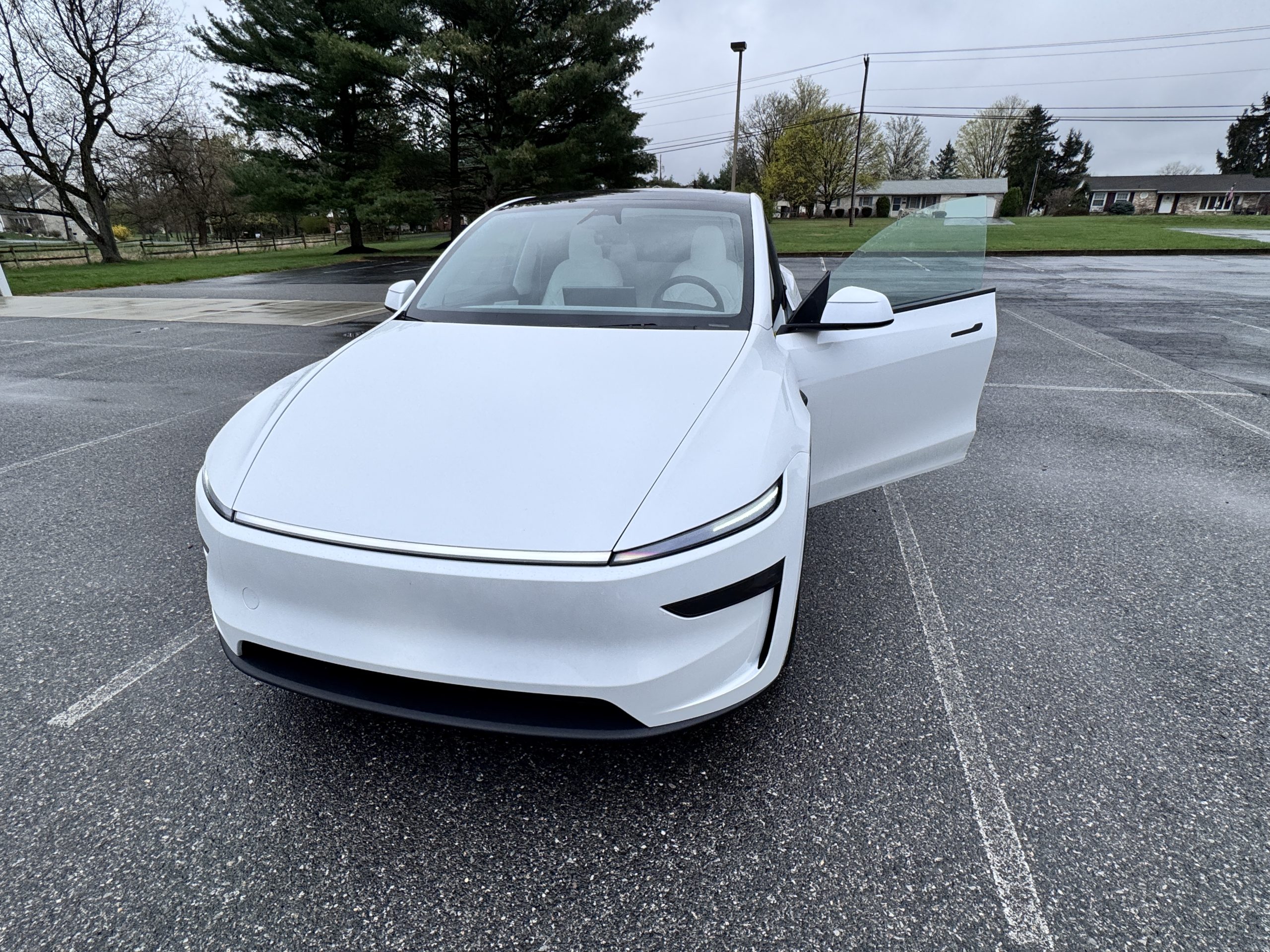
As the new Tesla Model Y arrived at a local showroom for Demo Drives, I swiftly signed up for one to compare the legacy model to what the company is hoping is an even better version of its best-selling vehicle. Coming off of a Legacy Model Y Demo Drive just two months ago, as I was planning to buy one, I had a good understanding of what was improved and what was not.
To make a long story short, I’m really happy I did not pull the trigger on the Legacy Model Y in February. The new Tesla Model Y is truly a much-improved version of what was already a great vehicle, and while I still think the Cybertruck is the best vehicle in Tesla’s lineup, the new ‘Juniper’ is right up there with it.
First Impressions
The first thing I really took note of was the massively changed exterior. The addition of the light bar on the front and the taillight bar that glows were two modernized designs that Tesla chose to implement on this vehicle.
While I never disliked the look of the Legacy Model Y, this is simply better. It’s more modern, slightly cleaner, and truly starts to give off the vibes of the Cybercab, which Tesla unveiled in October 2024.
Overall, the vehicle, in terms of dimensions, is not incredibly different from the past version. The look is really what changed here, and in my opinion, it’s for the better.

Fit and finish were really great. A quick inspection showed the car had been put together very well, and the Sales Advisor, who recently took a trip to Gigafactory Texas and viewed the new Model Y line, said Tesla has been really paying attention to the condition of these vehicles as they leave the factory.
Tesla had a very distinct focus on eliminating excessive panel gaps and aesthetic issues before they leave the factory.
Interior Changes and Higher Quality Materials
In the past, I’ve been sort of hesitant to buy Teslas because, for $35,000+, I felt like some of the interior parts were cheap. Most notably, the sliders above the storage and cupholders and the center console were things I felt should be of higher quality.
This was a big improvement. All of the compartment doors and covers felt much better in terms of overall quality. Nothing was creaky or cheap feeling, and paying $41,000 for a car (after tax credit) should come with materials that are a much better quality.
The steering wheel had a good shape, and the bottom portion of it being flat was not anything crazy, but it was nice.
My favorite tidbit of information was regarding the ambient lighting. Tesla did not run it as far back on the doors in the new Model Y as it did in the Model 3 Highland. Also, many owners apparently complained about the reflection of the ambient lighting on the windshield when they were driving.
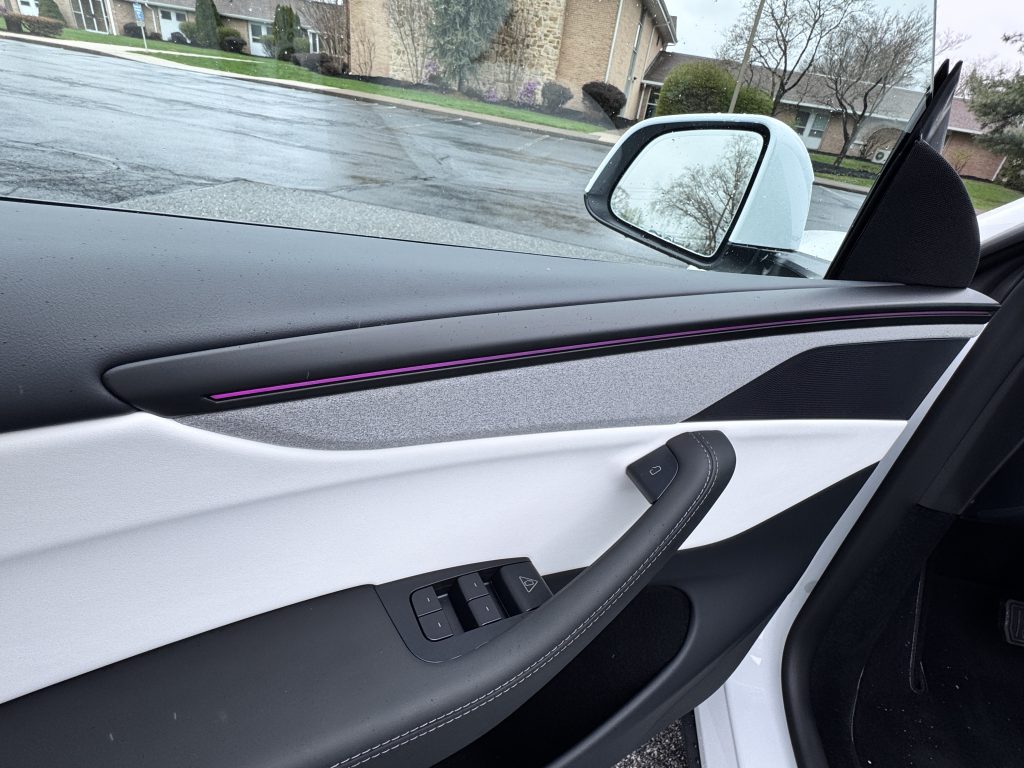
Tesla fixed this by covering the ambient lighting and pushing it into a nook that was designed for the lights specifically. There is no longer any reflection of the ambient lighting on the windshield, so it’s important to note that Tesla didn’t take the Highland interior and put it right inside the new Y.
Suspension Improvements Were the Best Part
By far, my favorite fixes were the suspension improvements. While the fixes to overall interior quality and the look are great, the feel when driving the car is truly more important.
The Model 3 Highland had a really great improvement from its past iteration, as I was able to test it with some spirited driving on Pennsylvania backroads. I felt the same way about the new Model Y. You can truly feel a lot of the things Tesla did to make the ride more comfortable in the new version of the crossover.
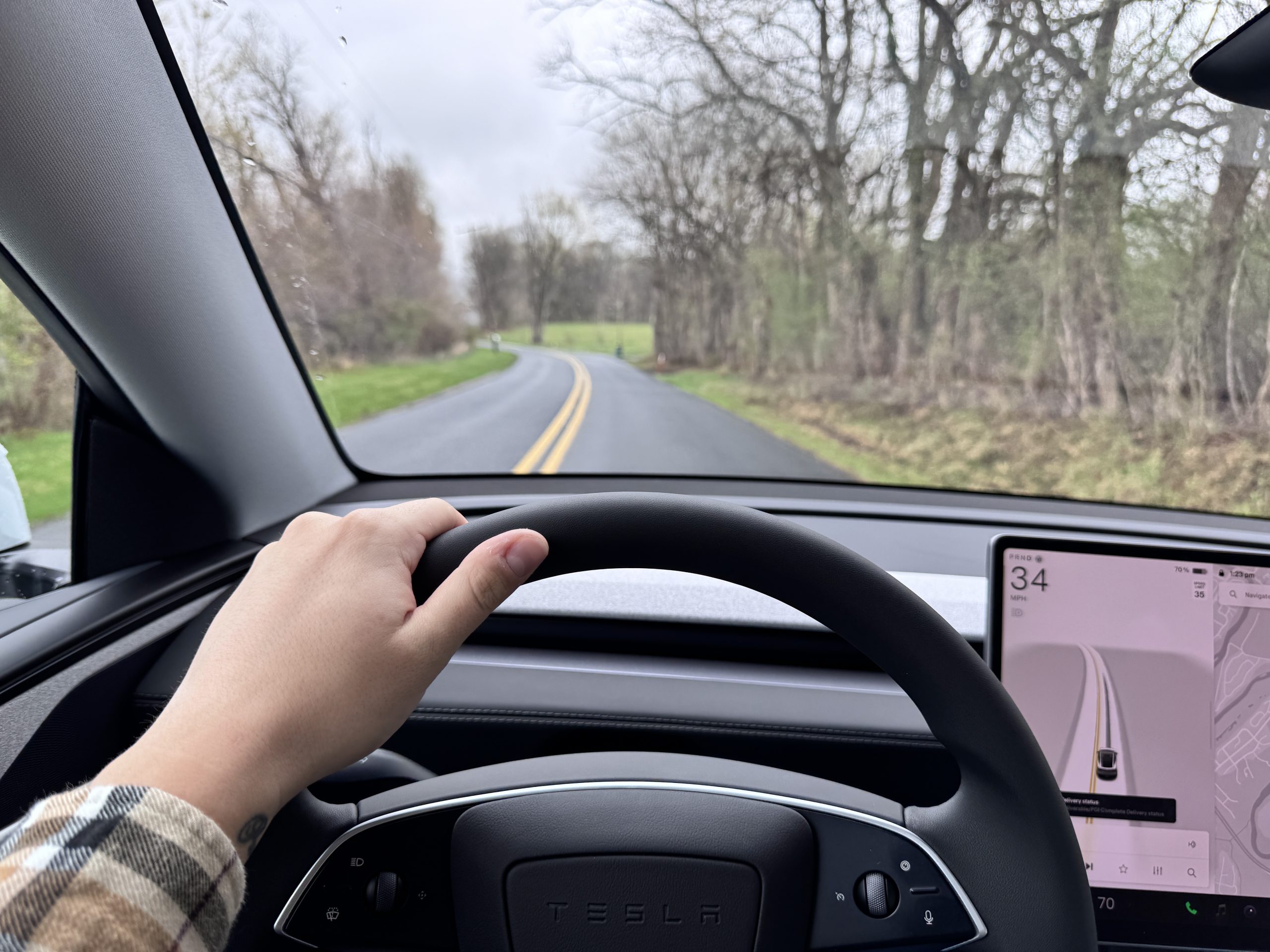
The ride feels solid but not rigid. It handles things like bumps, potholes, and other inconsistencies really well. It was never uncomfortable; it felt very sporty and responsive and hugged tight corners at higher speeds.
Room and Comfort
The vehicle was very spacious, and I had a lot of legroom in the back. I also liked the feel of the driver’s seat, and I felt like I was sitting in the cockpit of something sportier than a crossover. It was really very nice, and the seats seemed to hug you.
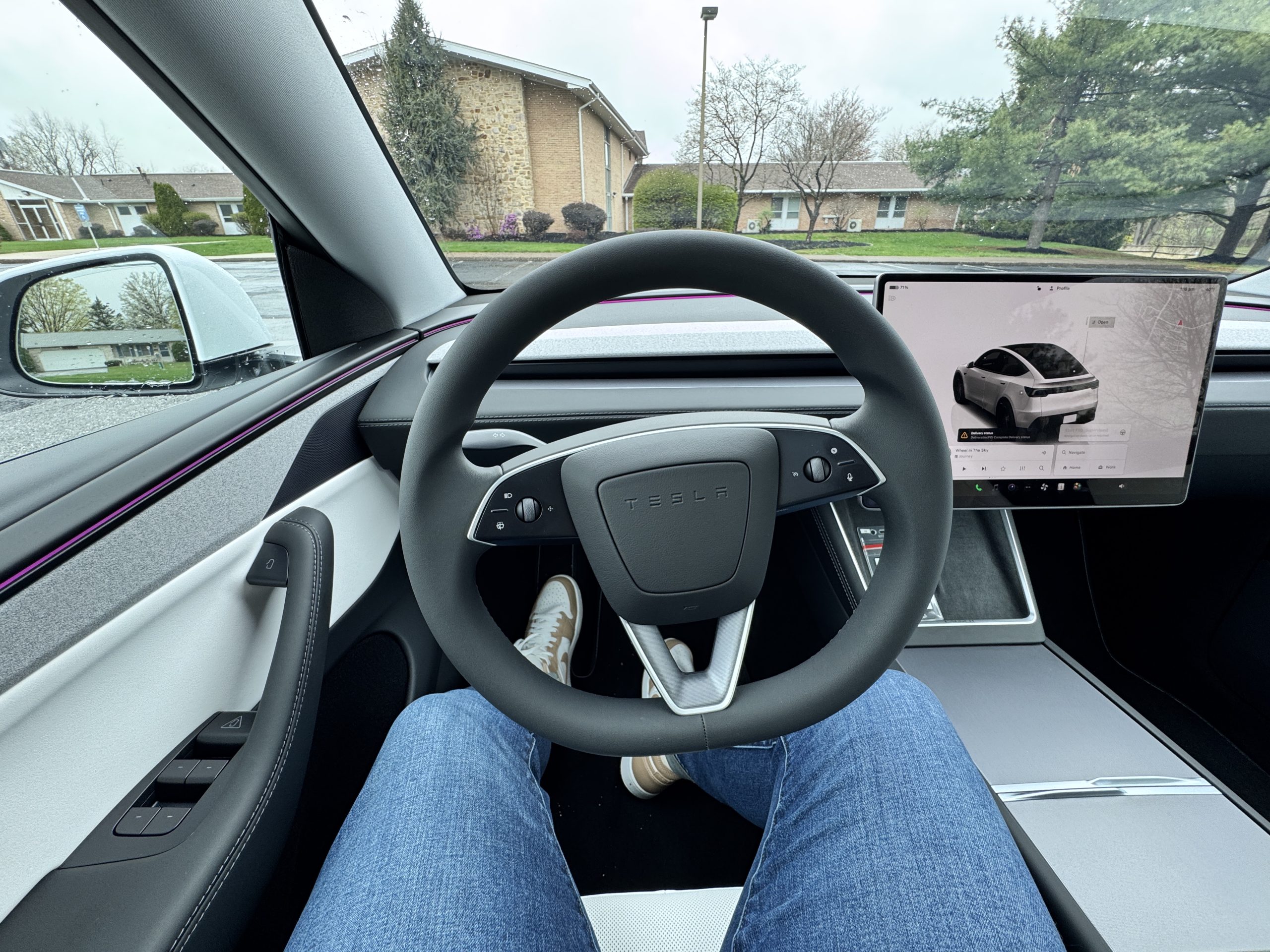
As far as the rear, it felt spacious and comfortable, and I wouldn’t worry about being stuck back there on a road trip that was 6-7 hours long.
The rear seats are heated, but the middle seat is not. The rear screen also gives occupants in the back of the car something to do, and Tesla even enabled multiple Bluetooth headsets the ability to connect to that center screen.
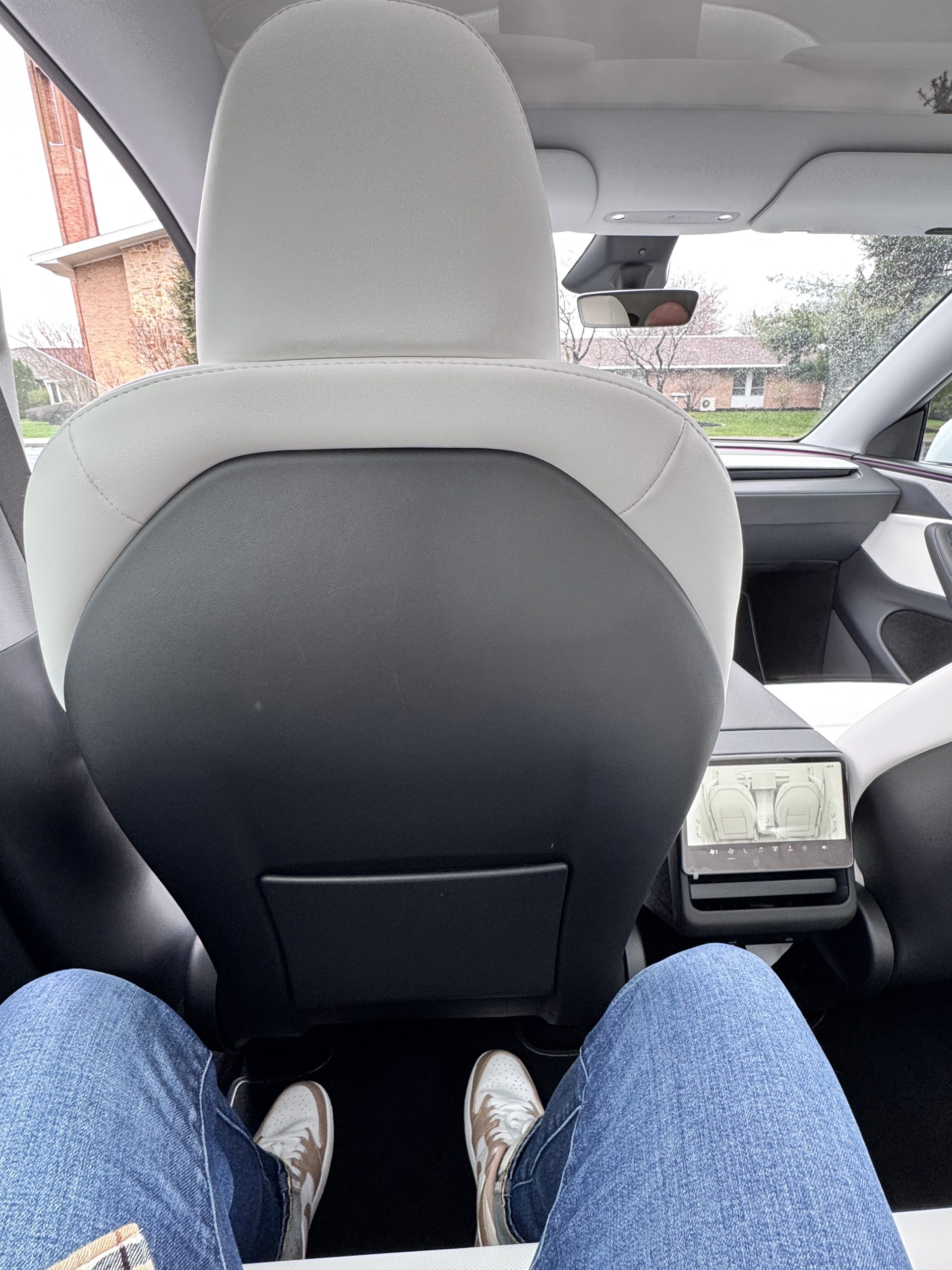
Other Tidbits
The small improvements from the new Model 3 are what really make the Model Y a great car. The previously mentioned ambient lighting fix is something that is great.
One other thing I really liked was that the trunk privacy cover now has a dedicated storage area, which is seen in the indentations here:
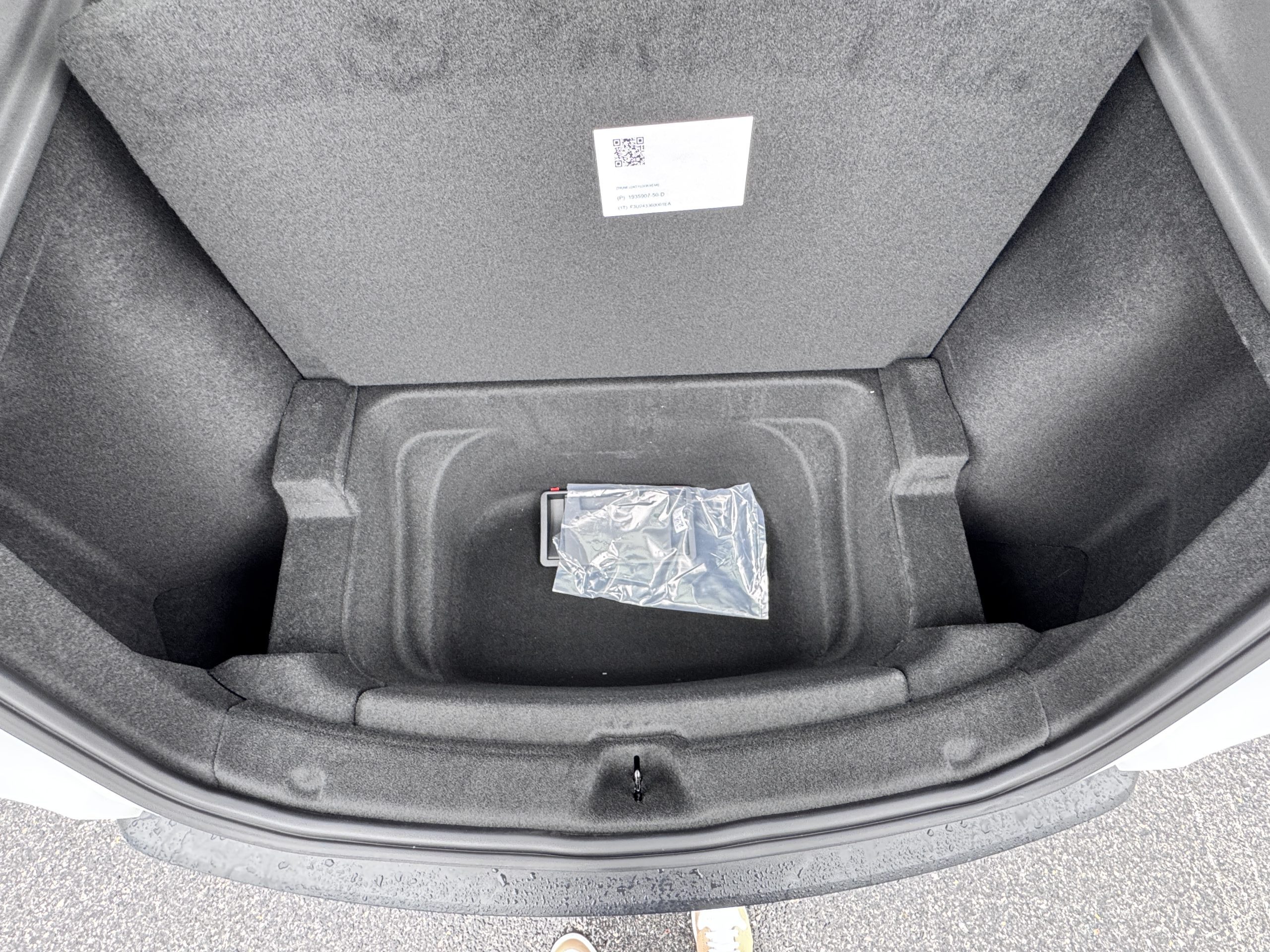
The trunk cover can be folded and removed and placed in those indentations, as opposed to sitting on floor of the trunk, potentially being bent and damaged by whatever you have back there.
This was one thing that was a nice touch.
Final Thoughts
All in all, I was very impressed with the new Model Y. It is undoubtedly better than what Tesla previously offered, and that car was the best-selling vehicle globally for two straight years. I would not be surprised to see many Legacy Model Y owners trade their cars in for this new version.
- The new Tesla Model Y taillight with no light
- The new Tesla Model Y taillight with taillight glow
There’s something to be said about a car that fits functionality and fun. The crossover design is popular because it offers so much more space than a sedan but is not the size of a massive, full-sized SUV.
The way this car drives is more like a sedan than a crossover, though, and how the suspension improvements really shine through is where this car is excellent and matches both the wants and needs of many.
While the Cybertruck is still my favorite Tesla to drive, the new Model Y is more accessible to more people and it truly was an awesome experience getting to run around in it for an afternoon.
News
Tesla cleared of some claims in Blade Runner lawsuit
A judge has ruled that the lawsuit can continue, despite dismissing certain parts of the allegations.
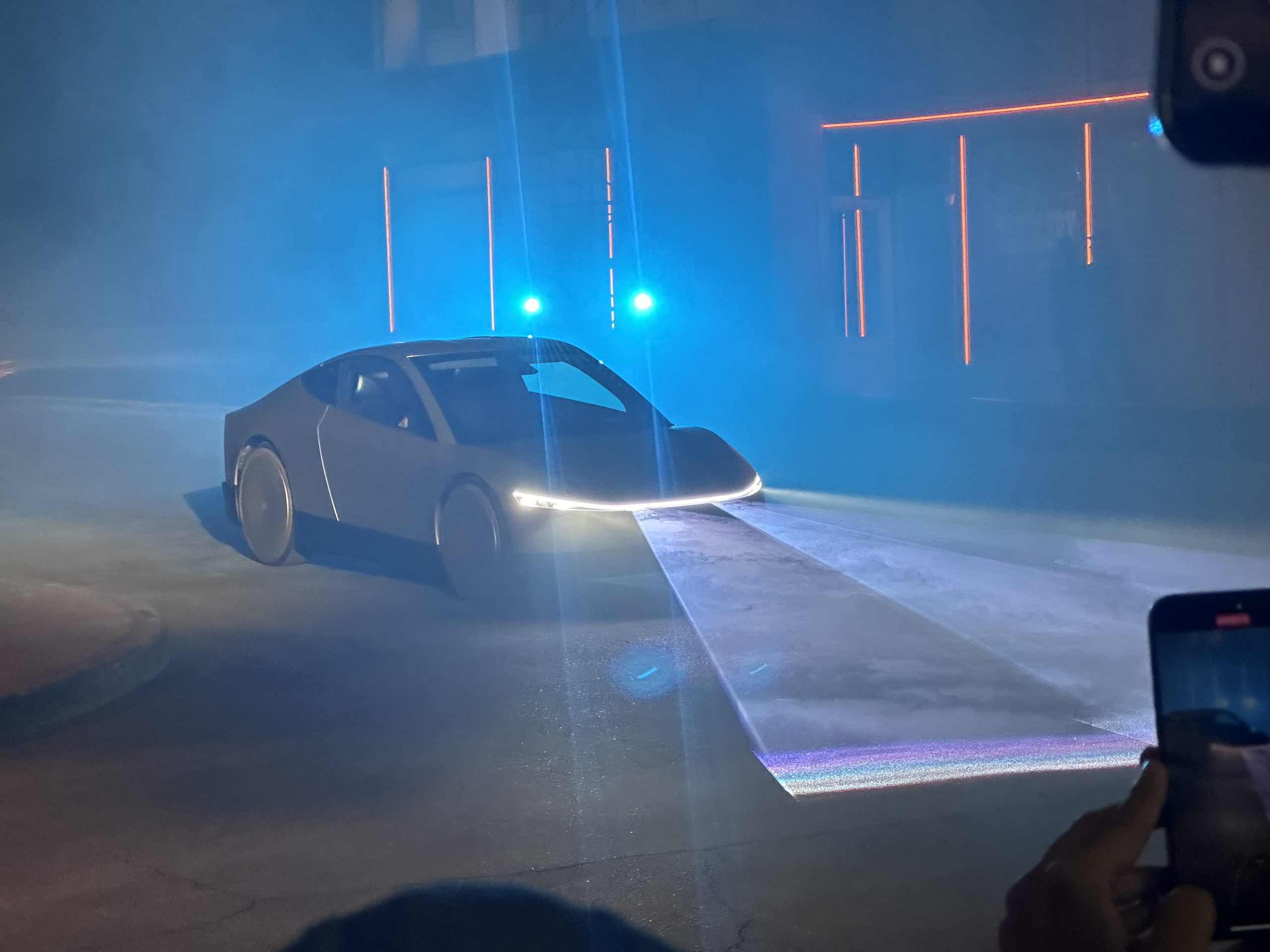
A judge has issued a tentative ruling dismissing some claims that Tesla and Warner Bros. violated trademark laws when using imagery from the film Blade Runner 2049 during an event in October.
Following the automaker’s “We, Robot” Cybercab launch event in October, movie studio Alcon Entertainment filed a lawsuit against Tesla and Warner Bros., claiming that the companies violated trademark and copyright laws with the use of Blade Runner 2049 imagery. On Monday, however, Los Angeles-based U.S. District Judge George Wu ruled to dismiss claims related to trademark infringement, while letting Alcon continue pursuing the copyright case (via Reuters).
The image in question was an AI-generated image of the futuristic world depicted in Blade Runner, which you can see below. Wu also went on to say that the event was only referencing the original Blade Runner movie, along with adding that Tesla and Alcon are not competing companies.
“Tesla and Musk are looking to sell cars,” Wu said. “Plaintiff is plainly not in that line of business.”
Alcon also claimed in the suit that Tesla and Warner Bros had requested rights to use images from the film last year, but said that the firm denied these requests.
At the time of writing, legal representatives for Tesla, Warner Bros, and Alcon have not yet responded to requests for comment. You can also see the full lawsuit below.
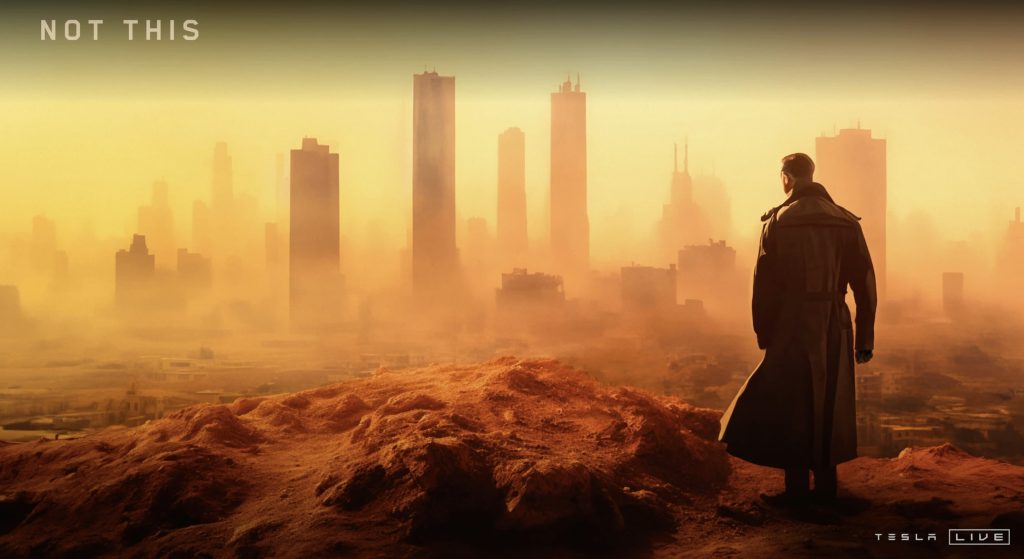
READ MORE ON TESLA’S WE, ROBOT EVENT: Elon Musk explains Tesla Robovan suspension system
Tesla unveiled its autonomous, two-seater Cybercab vehicle at the We, Robot event, along with a surprise unveiling of its larger Robovan. Teslarati was one of the first to be able to ride in the Cybercab at the event, and you can see our coverage of the ride below.
🎥: Our FULL first ride in the @Tesla Cybercab pic.twitter.com/6gR7OgKRCz
— TESLARATI (@Teslarati) October 11, 2024
During the event, Musk said that he was a fan of Blade Runner, though he also noted that he didn’t want to live in a dystopian world like that, but rather in one with an exciting future.
“So you see a lot of sci-fi movies where the future is dark and dismal, where it’s not a future you want to be in,” Musk said. “I love Blade Runner, but I don’t know if we want that future—I think we want that duster he’s wearing—but not the bleak apocalypse. We want to have a fun, exciting future.”
News
Tesla China focuses on exports as Q2 begins
Year-to-date, Tesla China’s registrations are up 3%.
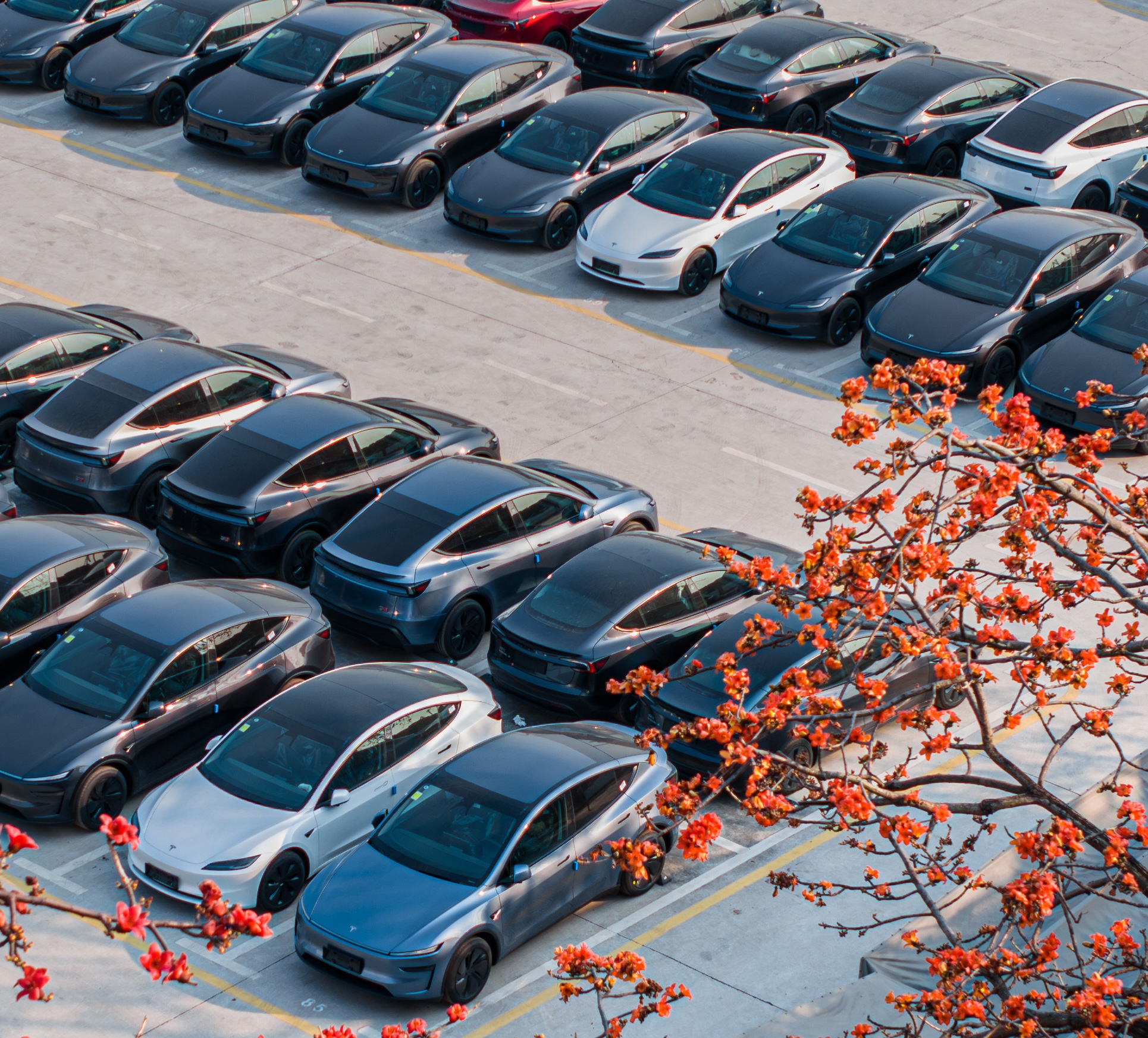
With the second quarter of 2025 now starting, Tesla China appears to have shifted gears, allocating Giga Shanghai’s Model 3 and Model Y output to foreign territories.
This was hinted at in Tesla China’s new vehicle registrations in the week of March 31 to April 6, 2025.
Tesla China Registrations
In the week ending April 6, Tesla China saw 3,600 new vehicle registrations. This represents a 82.6% week-over-week drop from the 21,000 insurance registrations that the company saw in the week ending March 30, but it also represents a 91.5% improvement compared to the registrations from the first week of Q2 2024. Year-to-date, Tesla China’s registrations are up 3%, which is impressive considering Giga Shanghai’s changeover to the new Model Y.
Tesla China does not report its weekly sales data, though a general idea of the company’s performance in the overall Chinese automotive market can be inferred through new vehicle registrations. Fortunately, these registrations are tracked closely by industry watchers as well as automakers like Li Auto.
Vehicle Export Hub
While the notable week-over-week drop in Tesla China’s registrations for the week ending April 6 may seem jarring, it should be noted that Giga Shanghai is the company’s vehicle export hub. Thus, it allocates a significant portion of its output to markets that are supplied by the factory. This is one of the reasons why Giga Shanghai only saw over 1,900 registrations in the first week of Q2 2024.
Tesla China typically spends the first weeks of a quarter exporting vehicles to foreign territories, before focusing Giga Shanghai’s output for domestic orders. Considering that the new Model Y has just been introduced to the market, it would not be surprising if Giga Shanghai starts focusing on the local market in the weeks to come.
-
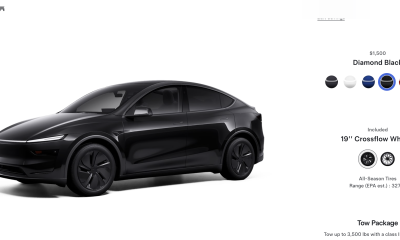
 News4 days ago
News4 days agoTesla rolls out new, more affordable trim of the Model Y Juniper in U.S.
-
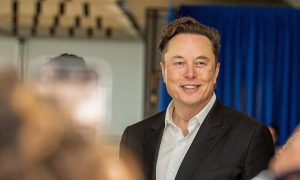
 Elon Musk2 weeks ago
Elon Musk2 weeks agoTesla CEO Elon Musk’s simple message to vandals
-
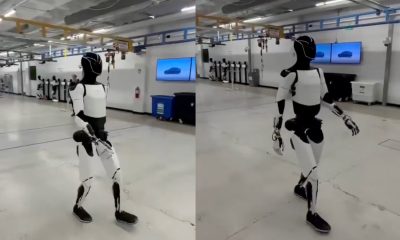
 News6 days ago
News6 days agoTesla shares Optimus’ improved walk in new update video
-
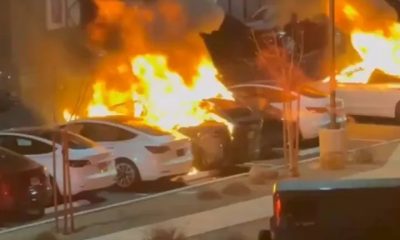
 Elon Musk2 weeks ago
Elon Musk2 weeks agoTesla vandal who lit Las Vegas repair center on fire arrested
-

 Elon Musk2 weeks ago
Elon Musk2 weeks agoElon Musk clarifies Trump tariff effect on Tesla: “The cost impact is not trivial”
-
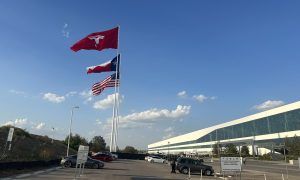
 News2 weeks ago
News2 weeks agoTesla US Gigafactories shields from Trump’s 25% Tariffs
-
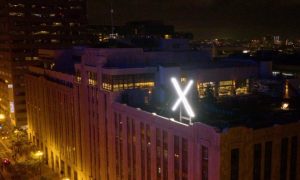
 Elon Musk1 week ago
Elon Musk1 week agoMusk says xAI has acquired X in $33 billion stock deal
-
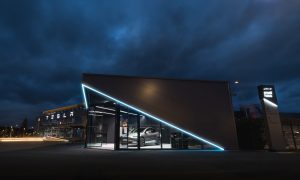
 Elon Musk5 days ago
Elon Musk5 days agoTesla Germany reports 4,935 units sold in Q1 2025
